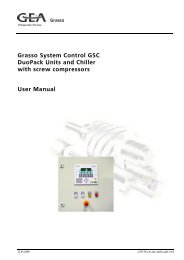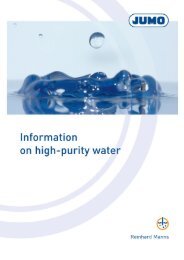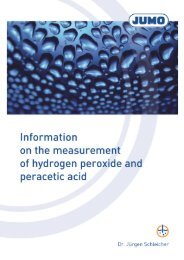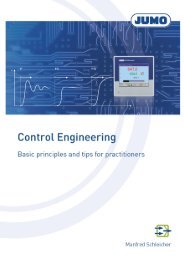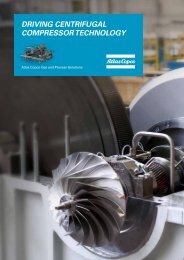FAS622en_pH measurement
You also want an ePaper? Increase the reach of your titles
YUMPU automatically turns print PDFs into web optimized ePapers that Google loves.
3 Quality assurance<br />
3.4 Cleaning<br />
If the behavior of the <strong>measurement</strong> setup indicates an electrode malfunction, the most effective<br />
way to clear the fault is by cleaning. The cleaning agent used basically depends on the type of contamination.<br />
In most cases, warm water with some household washing-up liquid is sufficient to remove<br />
grease and oil. Lime or iron oxide deposits can be removed with vinegar, citric acid or dilute<br />
hydrochloric acid.<br />
Never mechanically clean the membrane. Even wiping or drying the membrane can lead to faults in<br />
the <strong>measurement</strong> function.<br />
After cleaning, rinse the electrode with deionized (distilled) water.<br />
3.5 Calibration<br />
It is recommended that calibration is carried out after each maintenance operation (e.g. cleaning or<br />
changing the electrode), at the latest after about 3 to 4 weeks operating time.<br />
3.6 Storage of the electrode<br />
Electrodes have only a limited shelf-life. Stocks on hand should be used up within about a year.<br />
Do not leave an electrode connected to a switched-off instrument for a long period. Thoroughly<br />
clean the used electrode and store it.<br />
To store the electrode<br />
- close off the filler opening if there is one<br />
- fill the protection cap with electrolyte solution<br />
- insert the cleaned electrode into the protection cap<br />
- during longer storage times, check regularly that there is sufficient electrolyte in the protection<br />
cap.<br />
Store the electrode in such a way that no moisture can enter the connector.<br />
32 3 Quality assurance JUMO, FAS 622, Edition 04.07



